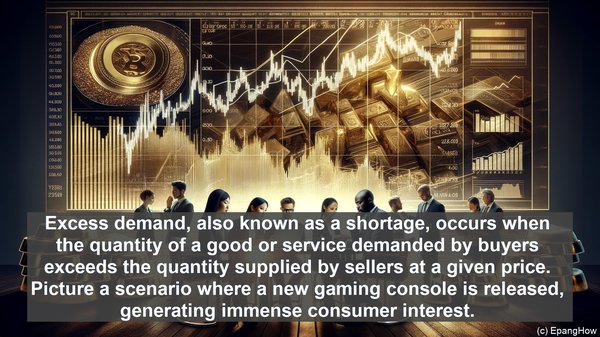Introduction: The Dynamics of Market Equilibrium
Hello everyone! Welcome to today’s article, where we’ll be delving into the intriguing world of market dynamics. At the heart of any market lies the concept of equilibrium, a state where demand and supply are perfectly balanced. However, in reality, this equilibrium is often disrupted, leading to either excess demand or excess supply. Today, we’ll be exploring the nuances of these two scenarios and how they impact market dynamics. Let’s get started!
Excess Demand: When Buyers Outweigh Sellers
Excess demand, also known as a shortage, occurs when the quantity of a good or service demanded by buyers exceeds the quantity supplied by sellers at a given price. Picture a scenario where a new gaming console is released, generating immense consumer interest. The demand for the console skyrockets, but due to production constraints, the supply falls short. This creates a situation of excess demand. What are the consequences? Well, in such cases, buyers often engage in bidding wars, driving up the price. Additionally, sellers might resort to rationing or prioritizing certain customers. Over time, the market may adjust, with increased supply or reduced demand, eventually restoring equilibrium. But until then, excess demand can lead to a host of market dynamics.

Excess Supply: When Sellers Outweigh Buyers
On the flip side, we have excess supply, also known as a surplus. This occurs when the quantity of a good or service supplied by sellers exceeds the quantity demanded by buyers at a given price. Imagine a situation where a new smartphone model is launched, but due to factors like changing consumer preferences or intense competition, the demand falls short. The market is flooded with unsold smartphones, creating excess supply. What happens next? Well, sellers might resort to price cuts or promotional offers to entice buyers. Alternatively, they could reduce production to align with the lower demand. The goal is to find a balance, where supply matches demand, and equilibrium is restored. Until then, excess supply can have its own set of market repercussions.
Implications for Market Dynamics and Equilibrium
Both excess demand and excess supply have significant implications for market dynamics and equilibrium. They reflect imbalances in the market, with either buyers or sellers having the upper hand. These imbalances can lead to price fluctuations, changes in production levels, and even shifts in market power. For policymakers and market participants, understanding the nature of these imbalances is crucial. It can inform decisions regarding price controls, production planning, and market interventions. By studying the patterns and causes of excess demand and excess supply, economists gain valuable insights into the functioning of markets and the forces that shape them.

